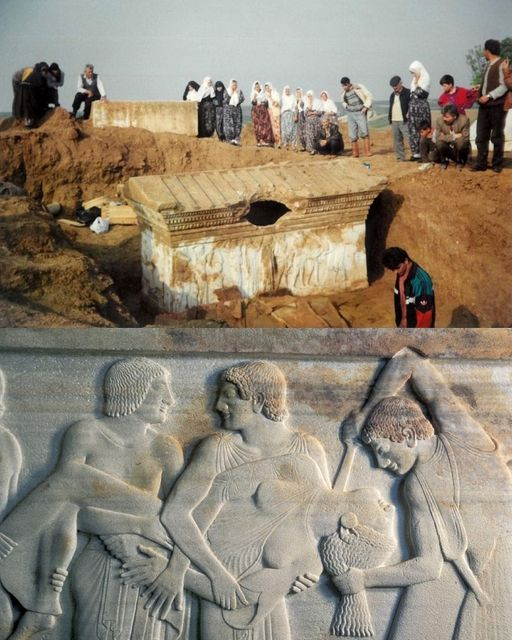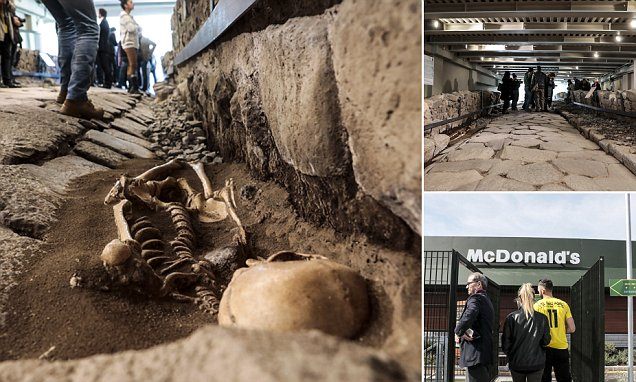In the 1920s, amidst the arid landscapes of Mesopotamia, British archaeologist Leonard Woolley embarked on a groundbreaking excavation at the ancient city of Ur. Little did he know that beneath the sun-baked streets lay a treasure trove of history waiting to be unearthed. As Woolley and his team meticulously excavated the ruins of this once-great civilization, they stumbled upon a remarkable discovery – a network of remarkably well-preserved drains dating back 4,000 years. In this blog post, we will delve into the significance of this extraordinary find and explore the advanced urban infrastructure of ancient Ur.

Engineering Marvels of Ancient Mesopotamia: The Discovery of the Drains
The discovery of the 4,000-year-old drains beneath the streets of Ur revealed the ingenuity and sophistication of the Sumerian civilization. These ancient drains were not mere conduits for wastewater; they represented a highly advanced system of urban infrastructure that showcased the Sumerians' mastery of engineering and architecture. Woolley's excavation uncovered a network of carefully constructed channels, designed to efficiently manage the city's sewage and stormwater runoff. The sheer scale and complexity of these drains provided compelling evidence of the Sumerians' advanced understanding of urban planning and sanitation.

Insights into Sumerian Society: Understanding Daily Life in Ancient Ur
As Woolley meticulously documented and studied the ancient drains of Ur, he gained valuable insights into the daily life and societal norms of the Sumerians. The presence of such a sophisticated drainage system indicated not only the Sumerians' concern for public health and sanitation but also their ability to organize and maintain complex infrastructure projects. Through careful analysis of artifacts and architectural features, archaeologists pieced together a vivid picture of life in ancient Ur, revealing a bustling city teeming with activity and innovation.

Mastery of Water Management: The Key to Sumerian Civilization
One of the most striking aspects of the ancient drains of Ur was the Sumerians' mastery of water management techniques. In a region prone to periodic flooding and drought, the ability to control and harness water resources was crucial for the survival and prosperity of urban settlements. The sophisticated drainage system of Ur not only facilitated the removal of wastewater but also played a vital role in mitigating the impact of flooding and preserving the city's infrastructure. The Sumerians' innovative approaches to water management laid the foundation for subsequent civilizations in Mesopotamia and beyond.
Conclusion:
As we reflect on the remarkable discovery of 4,000-year-old drains beneath the streets of ancient Ur, we are reminded of the enduring legacy of the Sumerian civilization and its contributions to human history. Through the meticulous efforts of archaeologists like Leonard Woolley, we continue to uncover the secrets of our past and gain a deeper understanding of the societies that came before us. The ancient drains of Ur stand as a testament to the ingenuity and resilience of the Sumerians, inspiring awe and admiration for their remarkable achievements in the field of urban infrastructure and engineering.
Archaeology and the Study of Ancient Civilizations:
The excavation of the ancient drains at Ur exemplifies the vital role of archaeology in unraveling the mysteries of the past. Through careful excavation, documentation, and analysis, archaeologists are able to piece together the intricate puzzle of ancient civilizations, shedding light on their culture, technology, and societal organization. The discovery of the drains beneath the streets of Ur provides invaluable insights into the engineering feats and urban planning strategies of the Sumerians, enriching our understanding of the complexities of ancient urban life. As archaeologists continue to unearth new discoveries and push the boundaries of knowledge, they contribute to our collective understanding of human history and the evolution of civilizations.






